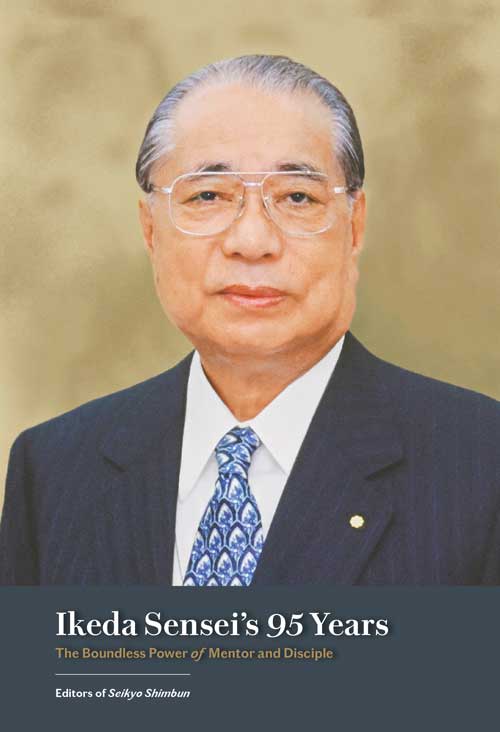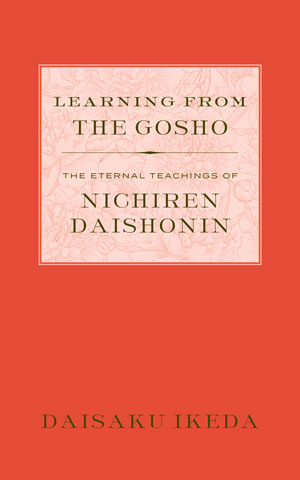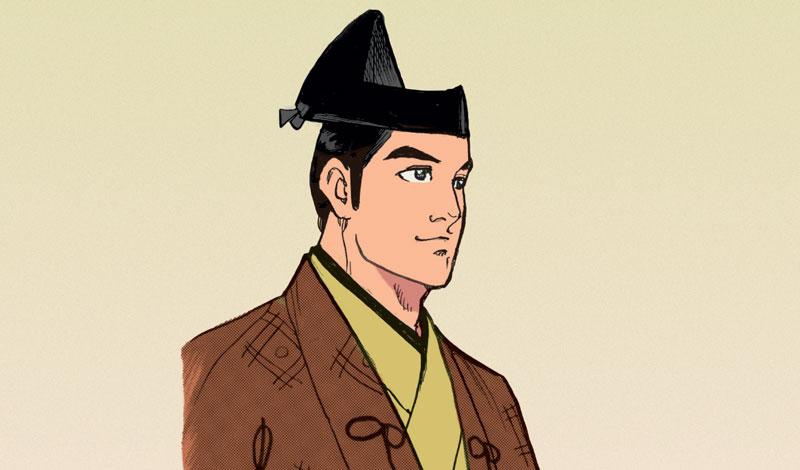On April 28, 1253, Nichiren Daishonin first proclaimed his teaching of Nam-myoho-renge-kyo to help people overcome suffering and build a society rooted in equality and respect. He also identified erroneous religious teachings as the source of the misery plaguing the people of his day and sought to correct these errors.
His declaration was a call to action, and, over time, he raised dedicated disciples who shared his vision of widely spreading his teachings to awaken people to their Buddha nature and bring about lasting happiness.
A Brave Young Leader
Among Nichiren’s most devoted disciples was the young Nanjo Tokimitsu from Ueno District in Suruga Province, near Mount Fuji. Born into a samurai family, his father, Nanjo Hyoe Shichiro, served the Kamakura shogunate.
Hyoe Shichiro died in 1265 from an acute illness, and later, Tokimitsu’s older brother also passed away, leaving 17-year-old Tokimitsu to oversee his family’s estate and assume his father’s duties as a village steward.
Despite these hardships, he developed resilient faith in Nichiren’s teachings and worked tirelessly to spread them. His dedication was evident not only in his strong belief and efforts, but also in his steady support of Nichiren through his contributions of food, clothing, financial support and other necessities. He did so even in times of famine or when facing financial difficulties of his own.
In Buddhism, there are two kinds of offerings or almsgiving: offerings of goods and offerings of the Law (spreading the teachings). Tokimitsu strove to do both.
In a March 1276 letter, Nichiren expressed gratitude for the gifts Tokimitsu and two fellow disciples had sent him:
I have received the taros, river nori, and wasabi, each one of which shows the sincerity of each of you. It is as if a bird were cherishing its eggs, or a cow licking its calf. (“Reply to Nanjo,” The Writings of Nichiren Daishonin, vol. 2, p. 655)
Nichiren highlighted their warm sincerity, comparing their offerings to a mother bird and a cow caring for their offspring.
In another letter, he emphasized the merit of supporting a votary of the Lotus Sutra:
One will gain greater blessings by giving alms to the votary of the Lotus Sutra, who in the evil world of the latter age is so intensely hated, than by giving alms to the Buddha for a whole medium kalpa. (“On the Offering of a Mud Pie,” WND-2, 499)
Courage in the Face of Persecution
Beyond material contributions, Tokimitsu, whose home became a propagation hub, strove to spread Nichiren’s teachings, working closing with Nichiren’s direct disciple, Nikko Shonin.
However, their efforts soon drew the attention of the ruling Hojo clan, who were determined to suppress Nichiren’s followers—especially those in Atsuhara village, near Tokimitsu’s estate. Hei no Saemon-no-jo Yoritsuna, a high-ranking official, arrested and threatened many of Nichiren’s disciples, hoping to force them to abandon their faith.
Despite the incredible risk to himself and his family, Tokimitsu courageously sheltered and protected his fellow believers, demonstrating unshakable commitment as Nichiren’s disciple.
His dedication came at a cost. The authorities imposed heavy punitive taxes on his estate. He couldn’t afford to keep his horse or provide suitable clothing for his family. Yet he never wavered in faith.
Recognizing his bravery and dedication, Nichiren honored Tokimitsu with the title “Ueno the Worthy” (see “The Dragon Gate,” WND-1, 1003)—the only disciple known to have received that honor.
Although he endured many hardships, Tokimitsu’s perseverance paid off. By 1307, historical records show, he earned the official title of Saemon-no-jo, an important rank in the Imperial Palace Guards in Kyoto. This suggests he gained financial stability and social status—a testament to his unwavering faith.
Even after Nichiren’s passing, Tokimitsu continued working with Nikko to ensure that Nichiren’s teachings would flourish.
Nanjo Tokimitsu’s story is a powerful example of dedication, courage and faith. As a young person, he played a vital role in supporting and spreading Nichiren Buddhism. His resolve and bravery in facing persecution make him an inspiring model for us today.
—Prepared by the SGI-USA Study Department
How Are My Contributions Making a Difference?
Thank you for your continued support and dedication to advancing our kosen-rufu movement. Financial resources serve an indispensable role as we continue our vital work to support our members’ Buddhist practice and development, while reaching out to those seeking a philosophy of hope and respect for the dignity of life.

New and Expanded SGI-USA Centers
The SGI-USA continues to build new and improved Buddhist centers to better support our members in creating peaceful communities.
In 2025, we will open new facilities in Denver, Colorado; Silicon Valley, California; and Hudson Valley, New York.

Buddhability by the Numbers
SGI-USA’s digital ecosystem continues to introduce Buddhist principles to American youth.
• Over 1.6 million podcast downloads
• Over 4,000 guests asking to be connected to a local SGI-USA community
• Over 50,000 followers on Instagram
• Over 65,000 newsletter subscribers
• 1.5 million people reached through social media



New Books
•Ikeda Sensei’s 95 Years: The Boundless Power of Mentor and Disciple
• Memories of My Youth
• Learning From the Gosho: The Eternal Teachings of Nichiren Daishonin
(coming soon)
You are reading {{ meterCount }} of {{ meterMax }} free premium articles

